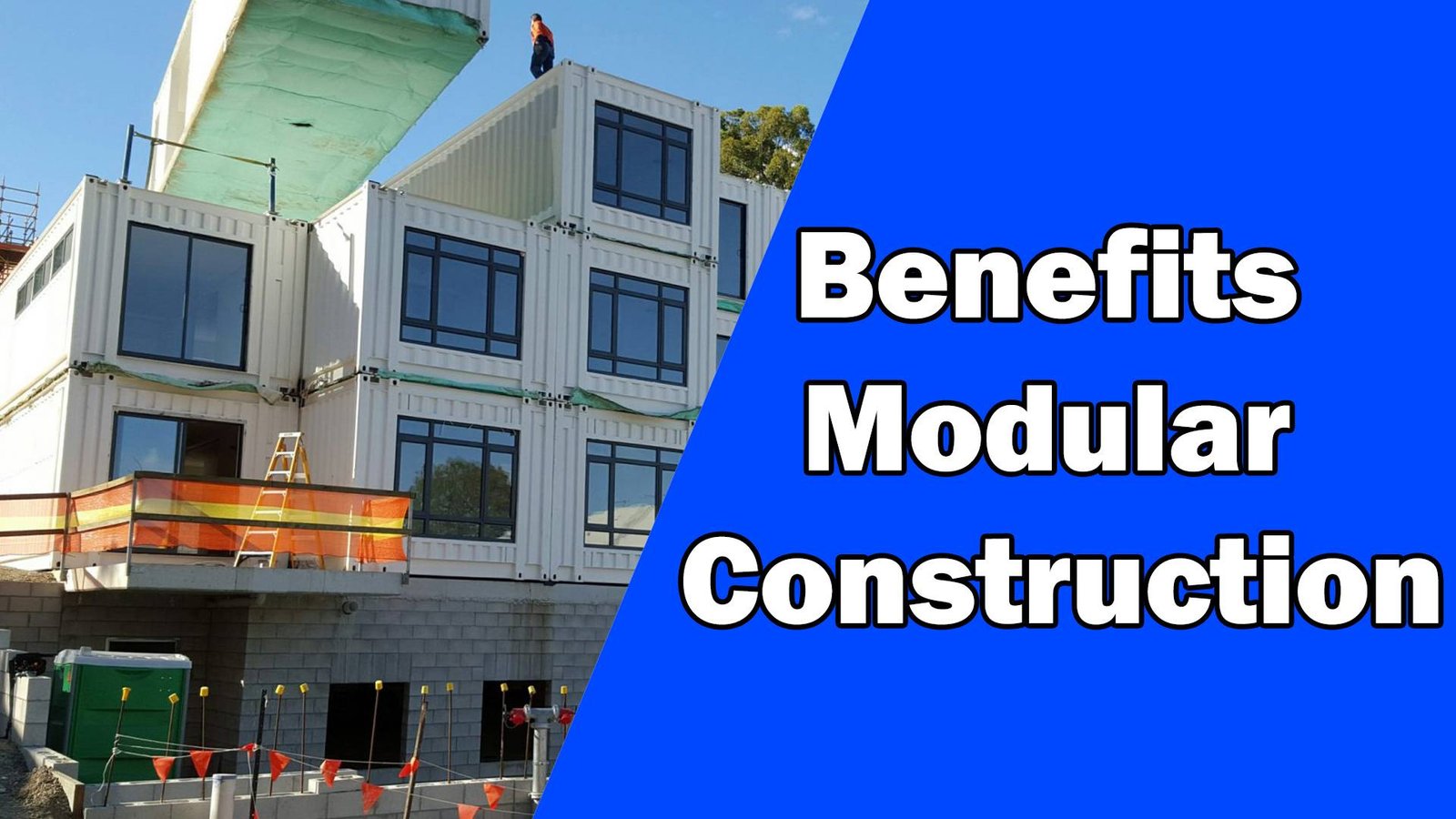Top 5 Benefits of Modular Construction in Civil Engineering Projects
Introduction
Modular construction has emerged as a game-changer in the civil engineering industry, revolutionizing the way projects are executed. Unlike traditional construction methods, where most components are built on-site, modular construction involves fabricating pre-engineered units off-site in a controlled environment. These units, or modules, are then transported and assembled at the project site. In this article, we will explore the top five benefits of implementing modular construction in civil engineering projects.
Understanding Modular Construction
What is Modular Construction?
Modular construction is a construction technique that involves the assembly of prefabricated units, or modules, in a factory-like setting. These modules are produced with high precision and quality control, ensuring consistency and reducing errors during the construction process.
How Does It Work?
In a modular construction project, the process starts with detailed planning and design. The modules are then constructed off-site, where skilled workers fabricate them using advanced machinery. Once completed, the modules are transported to the project site, where they are assembled together to form the final structure.
The Benefits of Implementing Modular Construction in Civil Engineering Projects
Speed and Efficiency
Modular construction significantly reduces project timelines compared to traditional construction methods. Since modules are built simultaneously while site preparation occurs, construction time can be reduced by up to 50%. This accelerated process enables faster project completion, leading to reduced labor costs and earlier revenue generation.
Cost-Effectiveness
By streamlining the construction process and minimizing material waste, modular construction proves to be cost-effective. The controlled manufacturing environment ensures that resources are used efficiently, leading to cost savings. Additionally, the reduced construction time translates to lower labor expenses and a quicker return on investment for project stakeholders.
Quality and Consistency
The prefabrication of modules in a controlled environment allows for higher quality standards and consistency. Skilled workers and automated machinery ensure precision, resulting in structures that meet strict quality regulations. Moreover, modular construction minimizes the impact of external factors like weather conditions on the construction process, further enhancing the quality of the final product.
Sustainability
Modular construction aligns with sustainable practices as it reduces waste generation and promotes recycling. The off-site fabrication process generates less construction debris, minimizing the environmental footprint. Additionally, modular structures are designed to be energy-efficient, reducing the overall energy consumption during the building’s lifecycle.
Flexibility and Scalability
Modular construction offers unmatched flexibility in design and scalability. The modular units can be easily reconfigured or expanded to accommodate changing needs. This adaptability is particularly valuable in sectors such as education and healthcare, where future expansions are common.
Real-Life Examples of Successful Modular Construction Projects
High-rise Buildings
In recent years, several high-rise buildings have been successfully constructed using modular construction techniques. These projects demonstrate the feasibility and advantages of modular construction in complex structures.
Infrastructure Projects
Infrastructure projects, such as bridges and railway stations, have also embraced modular construction. The pre-fabricated elements can be quickly assembled, minimizing disruptions to existing transportation routes.
Educational Institutions
Modular construction has been embraced by educational institutions to meet the growing demand for learning spaces. Modular classrooms and entire school buildings have been erected efficiently, ensuring timely delivery before the start of academic sessions.
Challenges and Limitations of Modular Construction
Design and Engineering Complexity
Modular construction requires meticulous planning and precise engineering. Ensuring seamless integration between modules and addressing structural concerns demand skilled professionals.
Transportation and Logistics
Transporting large modular units to the project site can be challenging, especially for remote locations. Logistics planning and coordination are critical to ensure the timely arrival of modules.
Regulations and Permits
Adhering to local building codes and regulations can pose challenges in modular construction projects. Coordination with local authorities is essential to secure necessary permits.
Addressing Misconceptions About Modular Construction
Durability and Strength
Some critics raise concerns about the durability and strength of modular structures. However, modern modular construction utilizes high-quality materials and rigorous testing to ensure structural integrity.
Design Limitations
Contrary to misconceptions, modular construction offers a wide range of design possibilities. Customizable modules allow architects to create aesthetically pleasing and functional structures.
Aesthetics
Modular buildings are often unfairly associated with a boxy, uniform appearance. Nevertheless, architectural creativity and façade treatments can enhance the aesthetics of modular structures.
Future Prospects and Advancements in Modular Construction
Technology Integration
The integration of advanced technologies, such as Building Information Modeling (BIM), enhances collaboration and efficiency in modular construction projects.
Building Information Modeling (BIM)
BIM facilitates better project visualization, cost estimation, and clash detection, streamlining the modular construction process.
Off-Site Manufacturing
As off-site manufacturing becomes more sophisticated, the potential for modular construction in a broader range of projects increases.
Conclusion
Modular construction has emerged as a transformative approach in civil engineering projects, offering numerous benefits such as speed, cost-effectiveness, quality, sustainability, flexibility, and scalability. Despite some challenges and misconceptions, the future of modular construction looks promising, with advancements in technology and continued innovation driving its widespread adoption. Embracing modular construction will undoubtedly shape the future of the construction industry and revolutionize the way we build.
Follow on Telegram Channel https://t.me/civilworks
5 Unique FAQs
- Q: Are modular buildings less durable than traditionally constructed ones? A: No, modular buildings are constructed using high-quality materials and undergo rigorous testing to ensure their durability and structural integrity.
- Q: Can modular construction be used for large-scale projects like skyscrapers? A: Yes, modular construction techniques have been successfully applied to construct high-rise buildings and other large-scale projects.
- Q: Is modular construction more expensive than traditional construction? A: No, modular construction often proves to be cost-effective due to reduced construction time, labor costs, and minimized material waste.
- Q: How does modular construction contribute to sustainability? A: Modular construction reduces waste generation, promotes recycling, and allows for energy-efficient building designs, making it a sustainable construction method.
- Q: What role does technology play in advancing modular construction? A: Technology, such as Building Information Modeling (BIM), improves project visualization, coordination, and overall efficiency in modular construction endeavors.
